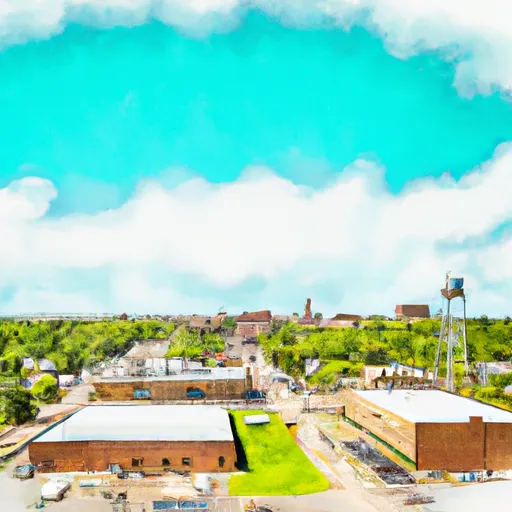-
 Snoflo Premium
Snoflo Premium
Get unlimited access to all our content
With no Ad interruptions! - Start Your Free Trial Login with existing account
Truman
Eden Index
Climate
6.5
•
Recreation
2.0
•
Community
1.9
•
Safeguard
3.8/10

Truman, Minnesota is a small city located in Martin County in the southern part of the state. The climate in Truman is characterized by four distinct seasons. Summers are warm with average temperatures ranging from the mid-70s to low 80s Fahrenheit, while winters are cold and snowy with temperatures often dropping below freezing. Spring and fall bring mild temperatures and pleasant weather.
Truman is surrounded by several lakes and rivers, making it an ideal location for outdoor water activities. These hydrology constituents include the Des Moines River and several nearby lakes, such as Tuttle Lake and Cedar Lake. Fishing, boating, and swimming are popular recreational activities for both locals and visitors.
In addition to water-based activities, Truman offers various outdoor recreation opportunities. The area is home to several parks and nature reserves, including the Truman State Wildlife Management Area. These areas provide ample opportunities for hiking, camping, bird-watching, and wildlife observation.
Overall, Truman, Minnesota offers a diverse range of outdoor activities due to its favorable climate, hydrology constituents, and natural landscapes, making it an attractive destination for nature enthusiasts and outdoor recreation lovers.
What is the Eden Index?
The Snoflo Eden Index serves as a comprehensive rating system for regions, evaluating their desirability through a holistic assessment of climate health, outdoor recreation opportunities, and natural disaster risk, acknowledging the profound impact of these factors on livability and well-being.
Climate Health Indicator (CHI): 6.5
Truman receives approximately
778mm of rain per year,
with humidity levels near 81%
and air temperatures averaging around
8°C.
Truman has a plant hardyness factor of
4, meaning
plants and agriculture in this region thrive during a short period during spring and early summer. Most
plants will die off during the colder winter months.
By considering the ideal temperature range, reliable water supplies, clean air, and stable seasonal rain or snowpacks, the Climate Health Indicator (CHI) underscores the significance of a healthy climate as the foundation for quality living.
A healthy climate is paramount for ensuring a high quality of life and livability in a region, fostering both physical well-being and environmental harmony. This can be characterized by ideal temperatures, reliable access to water supplies, clean air, and consistent seasonal rain or snowpacks.
Weather Forecast
Streamflow Conditions
Minnesota
Area Rivers
Minnesota
Snowpack Depths
Minnesota
Reservoir Storage Capacity
Minnesota
Groundwater Levels
Recreational Opportunity Index (ROI): 2.0
The Recreational Opportunity Index (ROI) recognizes the value of outdoor recreational options, such as parks, hiking trails, camping sites, and fishing spots, while acknowledging that climate plays a pivotal role in ensuring the comfort and consistency of these experiences.
Access to outdoor recreational opportunities, encompassing activities such as parks, hiking, camping, and fishing, is crucial for overall well-being, and the climate plays a pivotal role in enabling and enhancing these experiences, ensuring that individuals can engage in nature-based activities comfortably and consistently.
Camping Areas
| Campground | Campsites | Reservations | Toilets | Showers | Elevation |
|---|---|---|---|---|---|
| DeParcq Woods Military - Camp Ripley | None | 1,145 ft | |||
| Eagle Nest Park | 20 | 1,053 ft | |||
| St. James Municipal | 21 | 1,086 ft | |||
| Crow Wing State Park | 60 | 1,187 ft | |||
| Watona City Park | 28 | 986 ft | |||
| Clear Lake Co Park | 4 | 1,029 ft | |||
| Flandrau State Park | 90 | 972 ft | |||
| Charles Lindbergh State Park | 40 | 1,129 ft | |||
| Lake Hanska County Park | 22 | 1,027 ft | |||
| Truman City Park | None | 1,104 ft |
Nearby Fishing
Catastrophe Safeguard Index (CSI):
The Catastrophe Safeguard Index (CSI) recognizes that natural disaster risk, encompassing floods, fires, hurricanes, and tornadoes, can drastically affect safety and the overall appeal of an area.
The level of natural disaster risk in a region significantly affects safety and the overall livability, with climate change amplifying these risks by potentially increasing the frequency and intensity of events like floods, fires, hurricanes, and tornadoes, thereby posing substantial challenges to community resilience and well-being.
Community Resilience Indicator (CRI): 1.9
The Community Resilience Indicator (CRI) recognizes that education, healthcare, and socioeconomics are crucial to the well-being of a region. The CRI acknowledges the profound impact of these elements on residents' overall quality of life. By evaluating educational resources, healthcare accessibility, and economic inclusivity, the index captures the essential aspects that contribute to a thriving community, fostering resident satisfaction, equity, and social cohesion.

